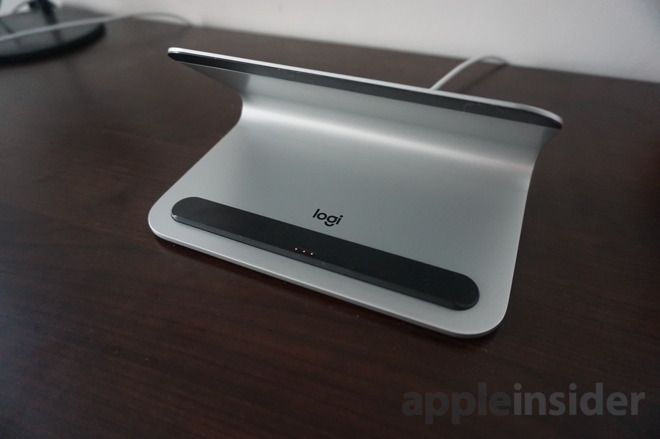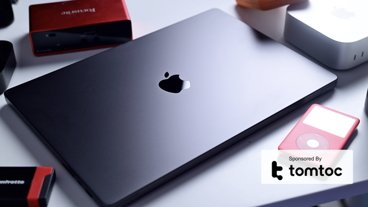Apple moved the Smart Connector in the latest iPad Pros that debuted this fall. Many blushed over the change, but this is not only bad for the iPad Pro now, but has also hurt future expansion in this space.
The Smart Connector on the iPad Pro had a lot of promise that wasn't fully realized. Located along the long-axis of the iPad, it allowed for some very conventional use cases with a similar footprint to that of a laptop. Advertising for the iPad Pro with this connector was probably the origin of Apple's latest push to use the device as a laptop replacement.
There are two primary issues with the port on the new iPad Pro — one that can be at least partially overlooked, and the other is going to be a show-stopper.
Moving the wrong way
The location shift of the Smart Connector is workable, but isn't a great call.
Apple most certainly had its own reason for this change, but it's bound to be a thorn in my side. We saw some of the ramifications of this when we examined the redesigned Smart Keyboard Folio. The biggest criticism of the case was the requirement of having a full back cover that added unnecessary bulk and weight on an otherwise slim device. I'd have preferred a two-piece design that allows for a removable keyboard with an optional back cover.
As it stands, you are stuck with both a keyboard and a back cover, or neither. If you wanted to remove the keyboard but keep the back, sorry, that's too bad.
By removing the port from the edge of the device, not only does Apple's Smart Keyboard Folio require a back panel, any future third-party keyboards will as well. This leaves those of us who don't want or need that rear protection stuck with lackluster Bluetooth options that don't use the Smart Connector.
We also have no chance of docking stations for the updated Pros. Unless the dock is exceptionally wide to reach all the way to the Smart Connector — which would be different for the 12.9-inch versus the 11-inch model. They could be docked in portrait mode, but iOS and iPad software as it stands today has far more utility in landscape mode, particularly when docked. We've used it as a picture frame, HomeKit control panel, and a second monitor all in landscape.
More keyboards, more options
Second is the poor adoption we've seen from outside companies, which the shift will not help. Apple touted at launch that third-parties could make use of the port, and they even reiterated strong support with products in the pipeline just last year. Now that the port has completely moved, anything in the works based on the previous port location is dead-on-arrival.
Since the original incarnation, only Logitech has put accessories on the market. They've launched multiple versions of their popular Slim Combo Keyboard (review) as well as a simple charging dock, the Base, which we also examined.
These accessories were well received, building on what Apple had already put forth. Logitech includes both function keys and backlights to their keyboard — aspects Apple frustratingly omits. With the new Smart Keyboard placement, both of these products wouldn't be possible.
A bleak outlook
The biggest issue we heard third-companies voice unhappiness with was the pogo-pin implementation, but that design remains the same. Apple opting to move the port and not fix common complaints made by those who rely on it for their own products outside of themselves doesn't seem like the best move.
At the moment I don't have high hopes for Apple's once-promising port. Apple has made compromises on their own Smart Keyboard Folio and handicapped hopes of other third-parties running with the technology.
 Andrew O'Hara
Andrew O'Hara

















 William Gallagher
William Gallagher
 Sponsored Content
Sponsored Content
 Malcolm Owen
Malcolm Owen

 Mike Wuerthele and Malcolm Owen
Mike Wuerthele and Malcolm Owen

 Andrew Orr
Andrew Orr
 Wesley Hilliard
Wesley Hilliard








89 Comments
If this were the only shortcoming of the new iPads there would be reason to get upset. As it stands, Apple's walled garden has shut out the iPad Pro from the pro market. iOS is seen as a toy operating system. It makes it impossible to do so many things that pros need to do like manage thousands of files or compile code or manage a network or ...
With the old connector the weight of the device when upright would push against the pins and make contact, and there would be little possibility for damage on either the pogo-pins or the iPad as it wouldn't be possible to shear the pins. Now, the iPad could be scratched by the pins when inserting it into a dock, or the pogo-pins could be damaged if the bottom of the iPad hit the pins as you placed it into the dock.
FUD
Where there is money to made from Apple's newest and most popular iPad, the third-parties will borrow from Apple's design and add functionality and affordability to this new configuration.
Nobody used the smart connector because it offers limited functionality and the iPad Pro market is not very large compared to the non-pro iPad market or the iPhone market. If you are a company that makes accessories for iOS devices, are you going to dedicate your time and attention to a niche market or the mass market? Moving the connector is Apple's acknowledgement that the port is primarily just for Apple.